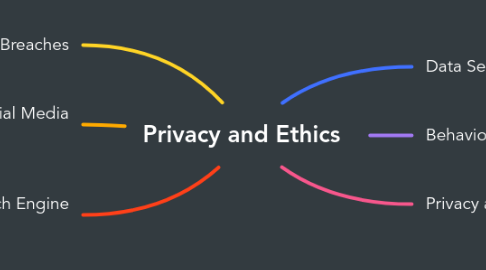
1. Cyber Security and Data Breaches
1.1. Best Practices for Cyber Security
1.1.1. Employee Training
1.1.2. Secure Network Infrastructure
1.1.3. Regular Software Updates
1.1.4. Strong Authentication Methods
1.2. Data Breach Response Plan
1.2.1. Incident Identification
1.2.2. Containment
1.2.3. Eradication
1.2.4. Recovery
2. Privacy and Ethics in Social Media Marketing
2.1. User Data Collection
2.1.1. Implementing Consent Mechanisms
2.1.2. Transparent Data Practices in Campaigns
2.1.3. Avoid Unauthorized Data Collection
2.2. Targeting and Personalization
2.2.1. Responsible Behavioural Targeting Strategies
2.2.2. Prevention of Discriminatory Practices
2.2.3. Respecting User Preferences in Campaigns
2.3. Community Management
2.3.1. Ethical Handling of User Generated Content
2.3.2. Responsiveness to Navigate Comments
2.3.3. Upholding Community Guidelines Consistently
2.4. Monitoring and Auditing
2.4.1. Regular Audits of Social Media Campaign Practices
2.4.2. Adaptation to Changes in Platform Policies
2.4.3. Proactive Detection and Resolution of Ethical Issues
3. Privacy and Ethics in Search Engine Marketing
3.1. Privacy Centric Practices
3.1.1. User Data Handling
3.1.2. Consent Mechanisms
3.1.3. Secure Data Storage
3.2. Transparent Advertising
3.2.1. Clearly Identifiable Ads
3.2.2. Distinction from Organic Results
3.3. User Centric Approach
3.3.1. Empowering Users
3.3.2. Privacy Settings Guidance
3.3.3. Respect for Ad Preferences
3.4. Monitoring and Optimization
3.4.1. Regular Analytics Audits
3.4.2. Ensuring Data Privacy Compliance
4. Data Security
4.1. Elements of Data Security
4.1.1. Encryption
4.1.2. Authentication
4.1.3. Authorization
4.1.4. Backup and Recovery
4.2. Common Threats to Data Security
4.2.1. Cyber Attacks
4.2.2. Malware
4.2.3. Phishing
4.2.4. Insider Threats
4.3. Best Practices for Data Security
4.3.1. Regular Software Updates
4.3.2. Strong Password Policies
4.3.3. Employee Training
4.3.4. Access Controls
